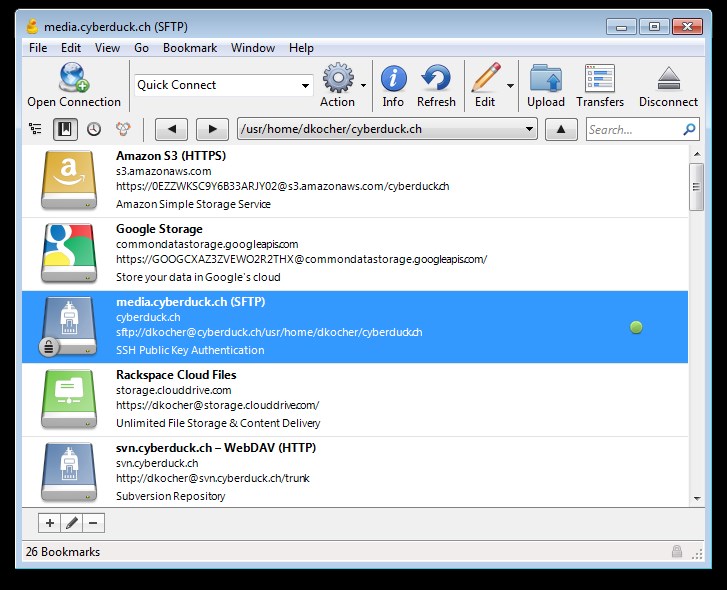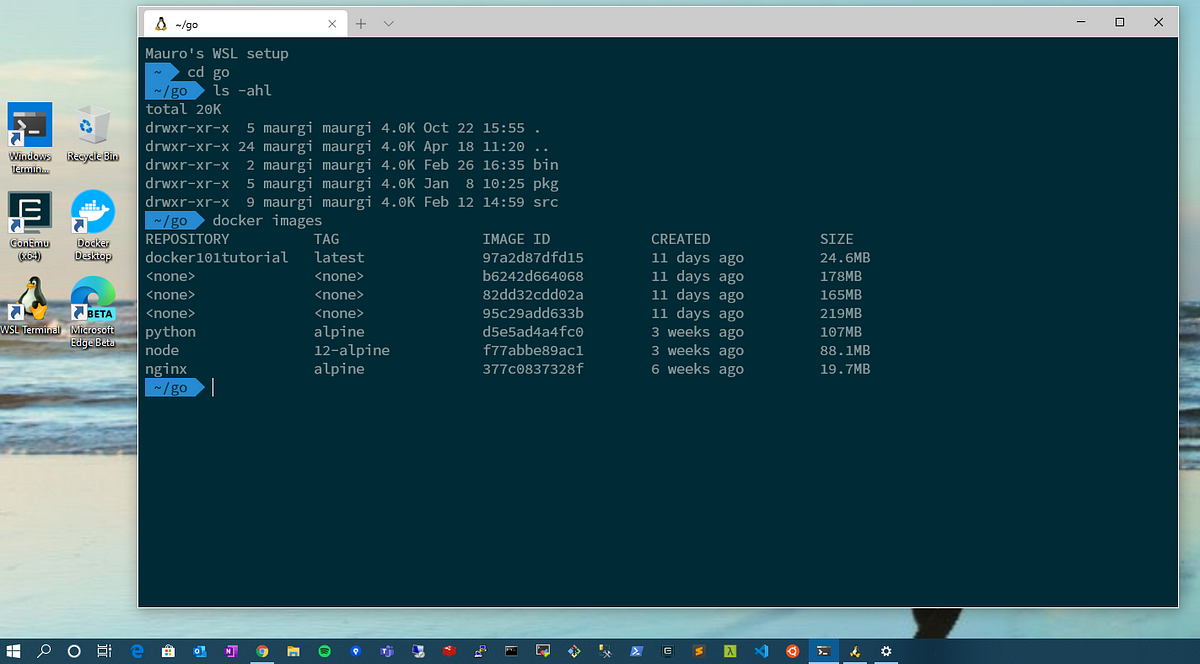

- #How to open terminal in cyberduck windows install
- #How to open terminal in cyberduck windows update
- #How to open terminal in cyberduck windows software
- #How to open terminal in cyberduck windows password
- #How to open terminal in cyberduck windows windows 7
if this happens, click Allow to continue. The Unknown Fingerprint message below may appear when you first try to connect to the server. #How to open terminal in cyberduck windows password
Note The Keychain stores sensitive information therefore so username and password don't need to be typed in each time. If you are using macOS - Click the box next to Add to Keychain. SSH Private Key should remain set to None. On the Password line: type your UMICH (Level-1) password. If you include you will get an error message when you try to connect On the Username line: type in your username. If the Port is changed you will not be able to connect. #How to open terminal in cyberduck windows update
Server Name should be changed to the name of the server where you want to access files, for example . The URL will automatically update to s.In the Connect dialog box, click the drop-down and select SFTP (SSH File Transfer Protocol).If it does not appear, try using another version of Cyberduck as described here: Other versions of Cyberduck You should see a window with U-M Host bookmarks. Follow the instructions in the installer.
#How to open terminal in cyberduck windows software
From the Software Center window, search for Cyberduck. Learn more about using the software center on MiWorkspace computers. Download the Cyberduck software from the Software Center (Windows) or Managed Software Center (macOS). You will then get a User Account Control dialog box – click “Yes” Downloading and installing Cyberduck on MiWorkspace and managed university computers with a Software Center To open Cyberduck, go to your Downloads folder and double-click the UM-Cyberduck.exe file (or you can open it using your web browser, if your web browser offers that option). Windows Users: If you use Microsoft Edge, you may have to click through a number of Microsoft SmartScreen screens in order to download a usable copy of the installer. Mac Users: If a "Select Destination" dialog box opens, you will need to click “Install for me only” (even if it already appears to be selected) before you can click the “Continue” button. Cyberduck will be in the Applications folder inside your Users directory, not in the main Applications folder where most software gets installed. You can use Spotlight to find it. 
Follow the instructions in the installer (will differ between macOS and Windows).
#How to open terminal in cyberduck windows install
Double-click the downloaded file to install Cyberduck. Find the downloaded file (will differ between macOS and Windows). Visit the U-M Software Directory for other ways to access Cyberduck, including on Campus Computing Sites computers. Download the U-M version of the Cyberduck software:. Mac requirements: macOS 10.9 or later on Intel (64bit) or Apple M1 requiredĭownloading and installing Cyberduck on personal computers and unmanaged university computers. #How to open terminal in cyberduck windows windows 7
Windows requirements: Windows 7 or later (64 bit) required. At that point, I'd totally forgotten about ftype myself until your question reminded me.Cyberduck, AFS, Windows 7 or later (64 bit), macOS 10.9 or later on Intel (64bit) or Apple M1 required IssueĬyberduck can be used to access files on various servers using SFTP (including AFS, MiStorage CIFS, Great Lakes, Armis 2, and Lighthouse) as well as U-M Dropbox and U-M Google Drive. If, in the future you find that ftype no longer works for you, see this answer that I provided just two days ago on an alterative. There are tweaks that you can do to the command line if that is an issue, but it does make launch slightly longer. This could bite you if you shell-out from Vim to bash often. Note that no profile or rc (startup) scripts are read from your shell when launching this way, so be mindful of that if there are any environment variable definitions you set there (or aliases, etc.) when inside Vim. For instance, launching C:\readme.txt this way will allow Vim to open /mnt/C/readme.txt. Uses the wslpath command to translate the Windows-style path that is passed in to the WSL equivalent. Starts WSL by executing ( -e) a sh instance with the actual commandline ( -c) we need, which. wsl.exe is the replacement command for launching WSL instances (of any distribution) and is much more flexible than the. I tested it with a hardcoded Windows path (with spaces) from within CMD, at least. Hopefully I'm getting the quoting/escaping correct. So, since I can't use ftype myself, I can't test out this solution, but I'm gong to propose, as a first pass: ftype txtfile=wsl -e sh -c "vi \"$(wslpath '%1')\"" I'm happy to hear that they are still working for you, but be aware that you may need to transition to other techniques in the future. Other registry entries override any attempts to change the default behavior via the venerable ftype command. 
Unfortunately (for me, not for you), ftype/ assoc are fairly deprecated, especially on Windows 11 it seems.







 0 kommentar(er)
0 kommentar(er)
